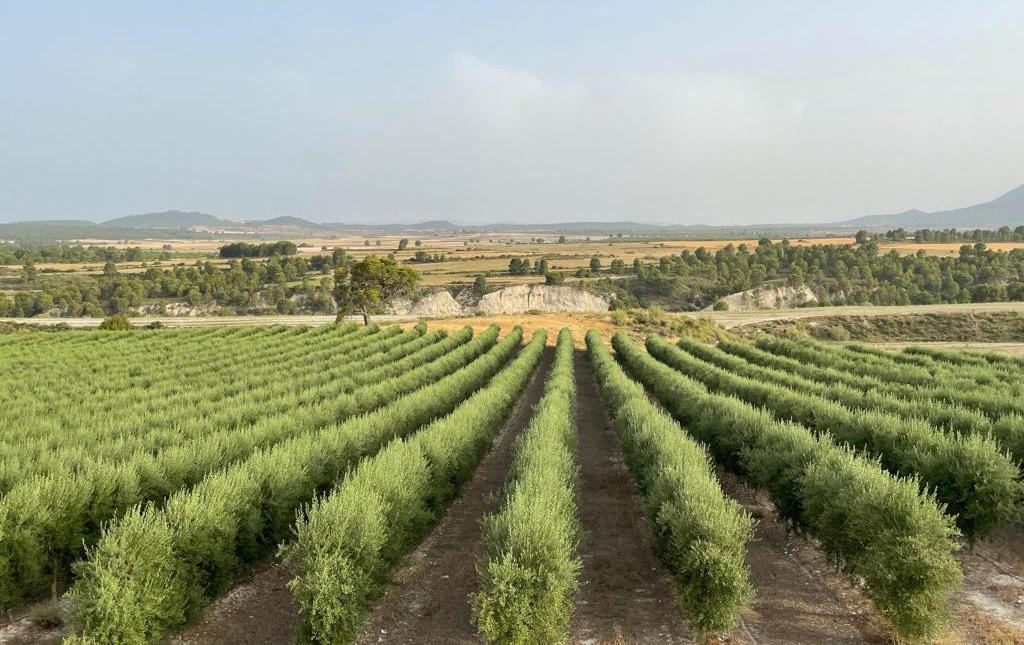
5 minute read
SLM Partners ~ The Investment case for regenerative agriculture
How investors can benefit from Natural Real Assets
2022 has been a difficult year for investors in traditional asset classes. Equity and bond markets have whipsawed because of soaring inflation and interest rate hikes. But one alternative asset has been largely immune from this volatility –farmland. Farming and farmland have been overall beneficiaries of inflation because of high food commodity prices. In the USA, for example, the average price of cropland rose by 14% between December 2021 and August 2022. In contrast, the S&P 500 Index fell by 17% and the BofA 7-10 Year US Treasuries Index fell by 11% during the same period.
Advertisement
This is one reason why investors are paying more attention to agriculture, and its sister asset class, forestry, which together make up the category of Natural Real Assets. There are strong financial reasons for long-term investors to allocate a portion of their portfolio to Natural Real Assets. As well as providing steady capital appreciation, across economic cycles, these assets can deliver stable income yields as an alternative to bonds. They are a natural hedge against inflation because the commodities produced comprise a big part of the basket of goods that define inflation.
Historically, farmland and timberland investments have matched the returns of other asset classes (equities, bonds, real estate) but with lower volatility. And owning these assets provides access to a new upside in the form of carbon markets and other environmental payments that are starting to emerge.
This last point highlights the other reason why investors are attracted to Natural Real Assets. Investment in this sector has the potential to deliver important positive environmental impacts around climate, biodiversity, soil health and water. Investors have signed up to many environmental commitments in recent years – investing in agriculture and forestry can provide a tangible way to deliver on them.

Olive grove from SLM Partner’s first acquisition in Spain earlier this year.
Not all agricultural investment can deliver on these goals. In fact, conventional agriculture is a major contributor to the cascading environmental challenges that now face us. Conventional farming is at fault for widespread soil degradation and the depletion of water resources. Intensive agriculture with pesticides and synthetic fertilisers is a main driver of biodiversity loss: one 2019 study found that it is the cause of 47% of insect decline globally. Conventional agriculture is highly dependent on fossil fuels and a major cause of greenhouse gas emissions (24% of the global total) through farm operations, soil carbon loss and deforestation.
The good news is that there is an alternative. There is a growing movement around regenerative and organic agriculture that can reverse this damage and deliver positive environmental outcomes.
Regenerative agriculture is manifested in many different ways, but it has a few common principles. It seeks to minimise soil disturbance, to keep soil covered (e.g. through cover crops), and to maintain living roots in the ground all year round. Regenerative farmers minimise the use of chemicals, instead relying on biology for fertility and pest control. They also implement more diverse cropping systems and seek to integrate livestock where possible.
When done well, regenerative agriculture has the power to restore soils, improve biodiversity and safeguard water. It can also turn farming from a carbon source to a carbon sink: Project Drawdown estimates that food and land use account for 43% of the world’s CO2 removal potential. Regenerative farming can also be more profitable, either because it delivers more yield from the same land, reduces input costs, allows farmers to tap into higher-value, premium markets (e.g. organic certification), or creates new income streams from ecosystem services (e.g. carbon credits).
Investors can help scale up regenerative agriculture by investing in land alongside farmers and providing the capital required to transition to new practices. This is the approach that my firm, SLM Partners, has used for more than a decade. We now manage $435 million in capital commitments, across funds and separate accounts in Europe, the USA and Australia. We believe that we can only achieve truly sustainable financial returns if we are enhancing natural capital.
Our activities span organic grains, grassfed beef and sustainable forestry. Recently, we have been on a journey to understand how the principles of regenerative agriculture can be applied to permanent tree crops, such as nuts and olives. These trees produce nutritious, high-value products but they are often grown with lots of chemicals and soildepleting practices. We have been excited to discover local farmers in Europe and the USA who have developed regenerative systems that are better for the environment while strongly profitable. We launched a new fund in Europe to help these farmers scale up and have completed our first investments in Spain and Portugal.
Investors are increasing their allocations to Natural Real Assets because of the twin goals of portfolio diversification and positive environmental impact. Regenerative agriculture is an attractive opportunity because it can deliver on both.








